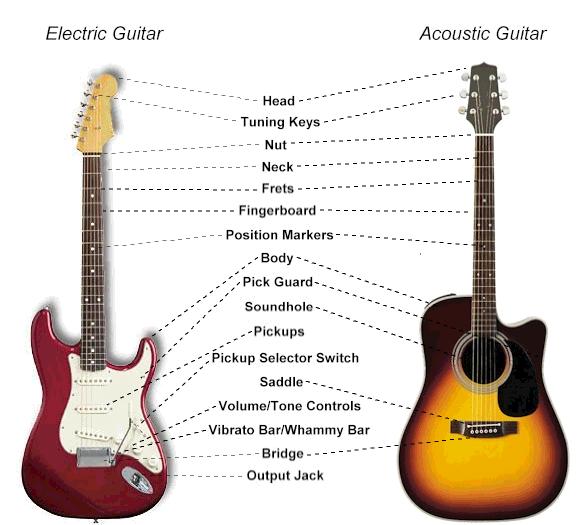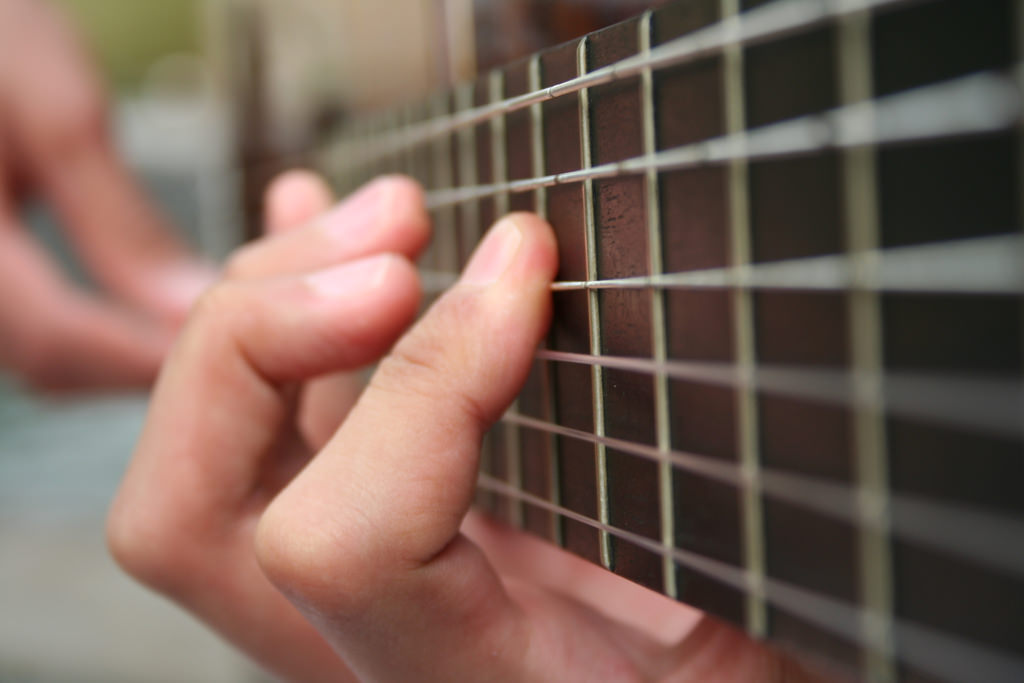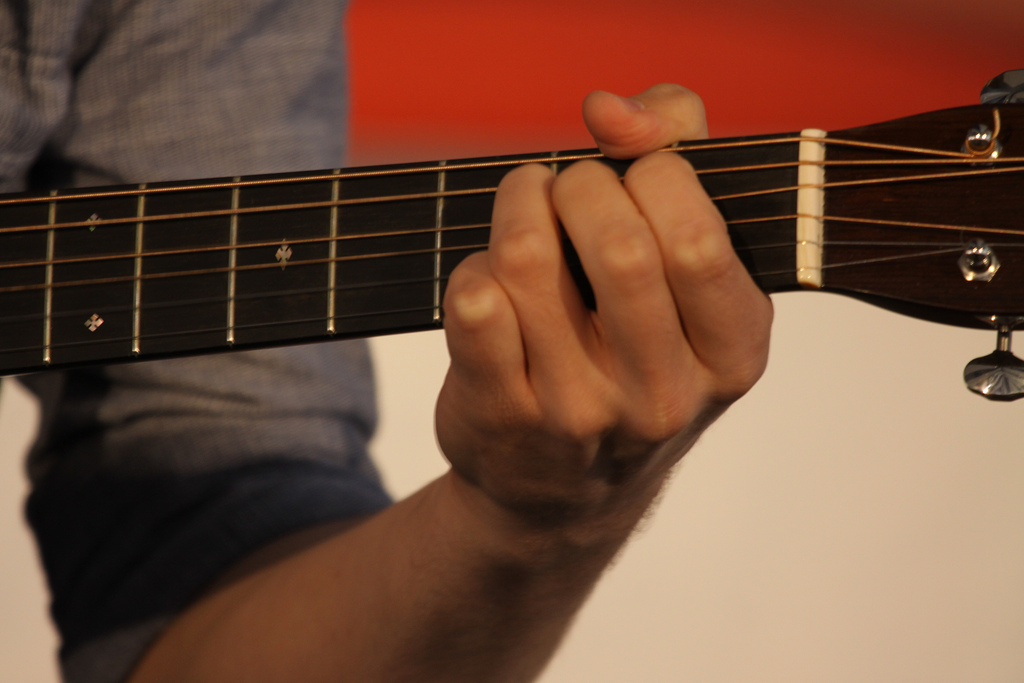Are you a beginner in the world of music? Or, are you just a beginner at playing guitar? Then, this little write up is capable of enlightening and expanding your knowledge in becoming a good guitarist.
When you look for a job in a studio or a music industry, you’ll pass through a music test depending on what you want to play (whether keyboard, drums, guitar, etc).
And, if you don’t have any idea of what is needed to be hired for the post you want, then you would lose out on the job. This is one of the main reason why we have created this write up consisting of the things every guitarist needs to know concerning guitars including the acoustic guitars as well as the fender acoustic guitars.
In addition, this post is not only for beginners, but it is also for every guitarist so that they can add more knowledge of what is expected of them as a guitarist, both on stage or churches.
Read on and expand your knowledge for a better result in your music life! It will not only give you more knowledge, but it will give you a closer look at acoustic guitars.
The Fundamentals Of Learning Acoustic Guitar

Every guitarist must actually learn and understand the order of training involved for easy advancement. Before you launch into your training period, there’s some quick advice to you.
In going through this list, you should not struggle to grab all at once. Allow it to be assimilated gradually because music is a cumulative process just like science courses.
You don’t jump to a higher stage without undergoing the lower stage! You can never understand calculus when you can’t get your left or right from algebra.
Also, don’t just memorize or learn these ideas without a music background. That will be studying inside a vacuum. You can try studying them within the perspective of a song from a good singer.
You will be surprised at the way the ideas will be deeply rooted in your memory after a long time, especially if you’re making use of these ideas within a natural music world background.
When you learn that way, it’s fun-filled and everlasting! It is also worthy to note that most of the processes do overlap sometimes.
While some are a gradual and continuous process which needs personal improvement as one advance in the training. In all the things, there is always a first time laid down rules. That is what you are going to get in this write-up.
Try them, and the sky is your limit! That’s not all! A good trainee must have the right equipment to study with. Therefore, before you get started with the techniques for learning acoustic guitar, there are some things to consider!
10 Things To Consider Before Getting Started With A Fender Acoustic Guitar
Searching for the best acoustic guitar can be difficult due to varieties of such in the market today. The manufacturers use a lot of equipment, woods as well as structure parts to form them making them vary in characteristics. Therefore a beginner should consider these four essential regions when planning on getting a Fender Acoustic Guitar.
1. Which Is The Best Acoustic Guitar For Beginners In The Market?
The best for you as a beginner is that which has what you are looking for. It does not matter how big or small it is or what others like, but what suits your ego.
2. The Prices of Acoustic Guitar For Beginners Should Be Affordable
You have to find out the ranges of the price it can go for. Then match the prices with your budget. All the same, ensure that you are getting the right one.
3. Purpose
A beginner should know what he or she wants from the guitar before purchasing any. If you want to play in the open, or with a band, the electric acoustic guitar is preferable, due to the furnishing with preamplifier which enables it to be connected to an intensified or sound context. When Acoustic electric Guitars are not connected, they play like other acoustic guitars.
4. Expertise
If you are still a novice, you might want to go for the affordable but good acoustic fender guitars. Just endeavor to know the difference between the various tone woods as well as how they impact reverberation.
5. The Sound
You have to let someone strike the chords while you listen from a distance to know the real sound of the acoustic guitar. This will enable a novice to choose the sound he or she likes.
6. Design of A Fender Acoustic Guitar
The body is made out of the soundboard which is bolstered by internal aid, the back with the sides all framing an empty section. It has the lower abdominal session and the lower session, while the midriff is the region between the upper and the lower session.
The state and size of the body determine the playability and the sound of the acoustic guitar. As a novice, be on the lookout for the shape that will suit you’re melodic as well as your physical needs.
The sound gap creates an impact too. It is through this that the sound activities align with the upper session at the fretboard base. It is always fitted with a plastic pickguard or pickguards of various materials to create a difference.
7. The Neck of The Fender Acoustic Guitar
The fender acoustic guitar strings are fixed to its body and terminate at its headstock. Its fretboard is fitted to its neck while the back is a molded dance to the player’s hand. Sometimes, the neck stocks to its body.
As a learner, select that with a dash on its neck which is rampant in all electric guitars. If it has a foot sole area, you’ll have more aid at its neck where it joins the body.
8. The Laminate Or Solid Top of An Acoustic Guitar
The wood used to form the top has an impact on the quality, and sound of the music. As a beginner, you may like to choose an acoustic with a big soundboard. The top is either made of strong wood or with overlay.
This side has an effect on the tone of the guitar. It transmits the sound produced to the place where it can be intensified.
Strong wood vibrates while laminate does not. It doesn’t give out as much rich sound and volume as it should. So a learner should get a good one to get started.
9. The Beauty of The Acoustic Guitar
Look for a beautiful and inspiring one. It will make you want to work on it at all time. Let it be amazing, cool looking and flexible.
Try playing the strings as well as others. Feel their sound and check if it is really what you want. The cost is not always the basis for selecting here.
10. The Kind of Wood Used
The kind of wood used in making fender acoustic guitars determines its durability and sound quality. There are different kinds of woods like mahogany, poplar, walnut, holly, spruce, Agathist, alder, etc., and all of them have a different weight that gives different sounds. So, get these kinds of guitar, the kind of wood used should be considered.
Learning Tips For A Beginner In Acoustic Guitar

Now that you have known some facts about the best Acoustic Guitar for the beginners in the market, you can go ahead now to the real learning periodic steps as follows;
- You Should Learn How To Read Music Tablature And Standard Notation
People always think this stage is complicated and difficult. That’s not true! This is what will make your learning experience easier and faster.
Notations are the directions for playing a piece of music. You can make it on an acoustic guitar without the instructions. Even if you manipulate your way through it, you’ll still miss out on a lot!
The Guitar tablature makes way for easy understanding although it does not include the rhythm notation. So you should master the rhythm to help understand the notes so that you can easily navigate to wherever you choose.
- The Open Position Note
The first three frets in each Guitar string is called the open strings. It is essential you master the notes on the strings one at a time and using some piece to master them. As time goes on, you can keep on expanding on them till you get to the last note.
- Essential Music Theory
Learn how the music is put together and this will help you greatly in your acoustic guitar training. Some of them include; method of building the chord, release, and tension, chord relationship, the meaning of key, intervals, borrowed chords, authentic, half and plagal cadences etc. make sure you don’t memorize only search them out in real music piece to see how they are implemented.
- The Fundamental Open Chords
They use a mixture of open string and fretted notes. They are positioned at the first three frets at the neck. Get started with the major, minor as well as the dominant 7th variations when using the natural notes (A-G). Train with the songs having such chords and don’t rush!
- Strumming Patterns
Start with 1/4 note, 1/8 and move to 1/16 notes and then syncopations. Train the rhythms over a chord and latter pairs for rehearsal. Gradually, you’ll learn to develop rhythm styles.
- Tuning By Listening
This can help you fine-tune your acoustic guitar to taste. Electronic tuners can be deceptive sometimes, so master ear method. Start off with a note from a good source and using relative pitch, tune the rest of the chords on the acoustic guitar.
- Barre Chords
If you have learned the open chords, you can start playing across the other chords that can’t be played like the open chords.
Barre chords use fretted notes to form chords. You need to understand eight structures here which are linked to the neck of your acoustic guitar. Training on a minor, major, dominant seventh, minor seventh, and sixth strings are essential here.
Barre involves holding down five to six strings down at once while striving to keep them sounding neat and nice. Train here since you’ll be using them often and on. Then train on the other notes alongside the fretboard.
- Pentatonic Scales
A guitarist should endeavor to master pentatonic scales instantly for they are essential. You can begin with the primary box pattern founded on the 6th string and progress to others.
- Major Scales
Learn the major scales because they are vital, but you have to alter them to get other exciting scales too. Balance the old with the new elements and try to observe their relationship.
- Position Playing
Entails performing melodies on the fretboard higher than that on the open notes. As soon as you have mastered the major and the pentatonic scales, position playing will not be difficult again.
- Minor Scales
This depends on the major scale you had mastered initially. You only need to know the harmonic, natural as well as the melodic minors.
- Extended Chords
This as the name implies goes beyond the minors and the majors. It entails the assorted versions of the 7th chords, augmented and diminished, 9th, 11th and the 13th voicing’s.
As you go ahead training, you begin to grab some new chord you come across while performing. And wow! You are getting to the level of a pro!
Conclusion
As a beginner, getting an excellent instrument is the basis for enjoying your training session. Your first step is to get a quality fender acoustic guitar which is the most affordable in the market today.
You will be surprised that it is not farfetched too. Many hobbyists greatly rely on this type of acoustic to develop a lot of signature music.
Once you have gotten the right instrument for your training, try to master the steps given you as gradually as possible knowing that music is a cumulative process.
You grab more when you study continuously with this self-explanatory guide that we have just written for you. If you are not yet obsessed with this write-up, we can easily give you more tips and aids to assist you in your guitar learning lessons.
So, are you interested in finding out more about acoustic guitars? Want to expand your knowledge on this? Click below to view and learn from our links! Check out the links at http://www.alphaconsumermusic.com/.
That is the place you will be more satisfied!
